| Electro-Hydraulics
Limited. |
|
It all started in 1897 with the
formation of the Liverpool Refrigeration and Engineering
Company Limited, a small private company who made
refrigeration equipment. In 1922 a long lease was taken out
on some farm land, on which to build a larger factory. The
new factory, called the Polar Works, was in Liverpool Road,
Sankey, Warrington, and contained machinery to make
refrigeration equipment. Part of the factory produced tubes,
which were assembled in another section to make evaporators
and condensers for their refrigerators. The company also had
factories at Coalbrookdale in Shropshire, and Saxilby in
Lincolnshire.
In 1937, the company, which at the time
was in liquidation, was purchased by Aeronautical and
Mechanical Inventions Limited, incorporated on 4th June,
1937. The factories at Coalbrookdale and Saxilby were
closed, and the new company began to manufacture aircraft
undercarriages and hydraulic equipment. The new company was
founded by Louis Sylvio Armandias, who came to England in
1936 after acquiring a licence to manufacture hydraulic
equipment under licence from the French Messier Company.
Production began in 1938, and in 1939
Rubery Owen purchased shares in the company, which had
started to produce undercarriages for the Handley Page
Halifax Bomber. Rubery Owen had a controlling interest,
owning 50,000 shares. The other shareholders were Associated
British Engineering, which held 10,000 shares, and
Aeronautical and Mechanical Inventions Limited, which held
5,000 shares. The company then became Rubery Owen Messier
Limited.
|
|
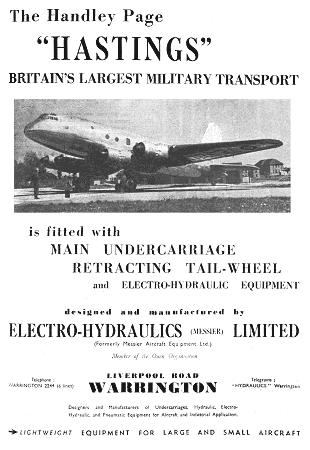
An advert from 1946. |
During the Second World War the company
produced thousands of sets of aircraft undercarriages and
the associated hydraulic equipment for many aircraft
including the De Havilland Mosquito.
In 1942 Armandias left the company, and
in March 1943 its engineering work was transferred to a new
company, Rubery Owen (Warrington) Limited.
Over the next
three years the company had three name changes. On 21st
April, 1943 it became Messier Aircraft Equipment Limited,
and on 29th March, 1946 it became Electro-Hydraulics
(Messier) Limited, followed on 22nd November, 1946 by
Electro-Hydraulics Limited.
At the end of the war, Rubery Owen Messier Limited acquired
a non-exclusive licence from the French Messier Company, so
that hydraulic equipment could be freely produced using ten
of the company’s patented designs. |
|
Due to the reduction in demand for
aircraft parts after the war, a prototype fork lift truck
was developed. The fork lift truck was so successful that a
full range of fork lifts was developed, which by the late
1940s had become a major part of the business.
It became known as the ‘Conveyancer’
fork lift truck, believed to be the first fork lift truck
manufactured in the UK.
In 1946 the company also opened a
design and development section, with prototype manufacturing
facilities to design aircraft equipment, and an industrial
hydraulic design department to develop hydraulic systems for
industry.
In the late 1940s undercarriage equipment was
developed for six new types of aircraft, ranging from a small
monoplane weighing 4,000 lbs, to the Handley Page Hermes IV
civilian airliner, weighing 83,000 lbs. Other developments
included a new range of hydraulic and pneumatic equipment,
solenoid valves, and electrically operated fuel vales which
were used in the Rolls Royce ‘Derwent’ and ‘Nene’ jet
engines.
On 2nd February, 1951 Conveyancer Fork
Trucks was formed to sell and service trucks made by
Electro-Hydraulics Limited.
|
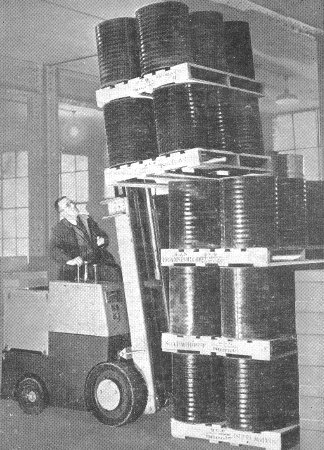
The battery powered Conveyancer Mark
IV. From the spring 1949 edition of the staff magazine
"Goodwill". |

The main machine shop. From the spring
1949 edition of the staff magazine "Goodwill". |
By 1961 Electro-Hydraulics Limited had
1,750 employees, and acquired the rights to manufacture the
narrow-reach equipment produced by the Raymond Corporation,
USA. A new subsidiary called Conveyancer-Raymond was formed,
which was 70 percent owned by Electro-Hydraulics, and Electro-Hydraulics became agents for the Shorland
forklift trucks, made by Short Brothers and Harland. |

A Handley Page Hermes IV. From the spring 1949
edition of the staff magazine "Goodwill".
| On 9th July, 1964 Electro-Hydraulics
became a public company, and 40% of the shares (2.4m shares)
were sold to the public. In 1970 the shares were
re-purchased and the company was again wholly owned by Rubery Owen.
In 1971 the manufacture of aircraft
undercarriages and hydraulic systems ceased. That part of
the business was sold to Dowty Rotol Limited. |
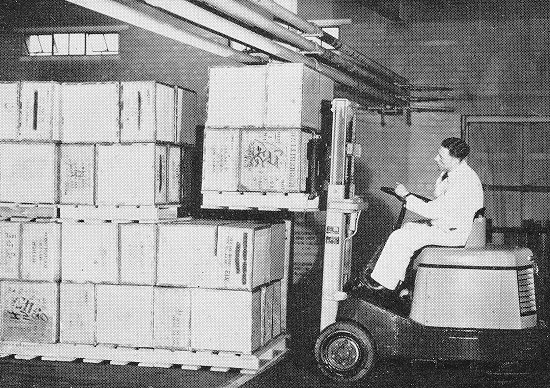
A 10 cwt. Mark VIII Conveyancer truck.
From the spring 1949 edition of the staff magazine
"Goodwill". |
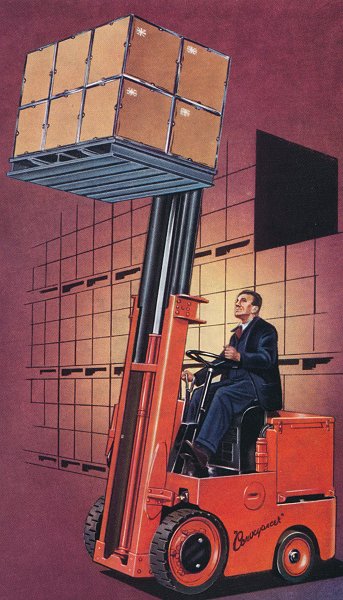 |
Conveyancer fork lift trucks had a load capacity of up
to 6,000 lbs. and were powered by petrol, diesel, or
electric motor. They had a full lift of 9 to 12 feet. A
variety of attachments were produced including a squeeze
clamp for non-crushable goods. There was also a hydraulic
shovel of 0.5 to 1 yard cubic capacity for all granular
materials, and a rotating head that picked-up, conveyed, and
emptied bins.
There were also attachments for handling coils, and open
centre goods. Also brick forks, barrel forks, and a crane.
The firm ran a materials handling advisory service, which
had a team of experts to advise customers on modern handling
methods. |
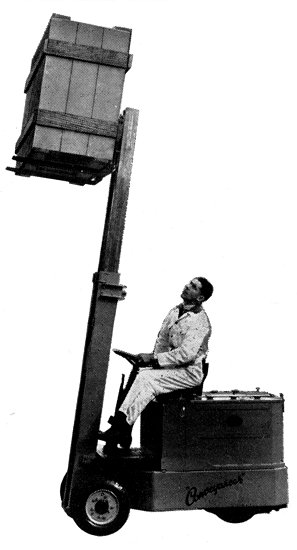
A Conveyancer fork lift truck type
E2-20/3W, battery powered, lifting 2,000 lbs. at 9 feet. |
|
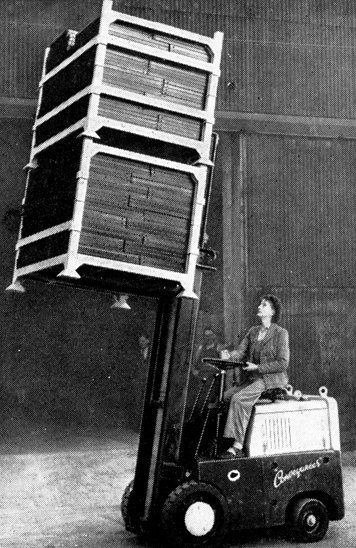
A Conveyancer fork lift truck type
E4-15 with a full free lift stacking mast. Capacity 4,000
lbs. |
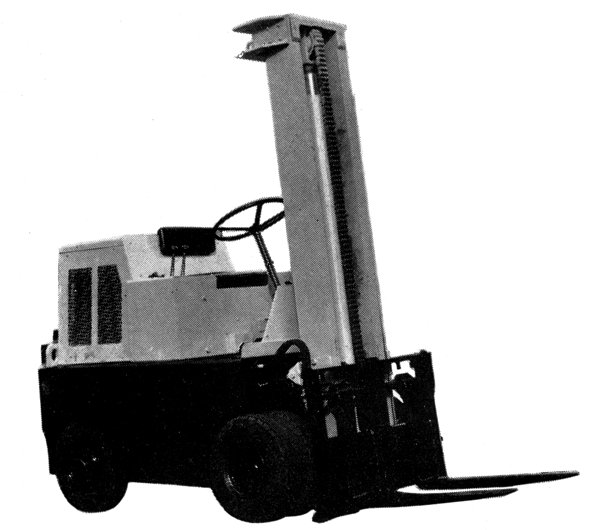
A Conveyancer fork lift truck type
D6-20 that could be fitted with a petrol or diesel
engine. It could lift 6,000 lbs. up to 12 feet. |
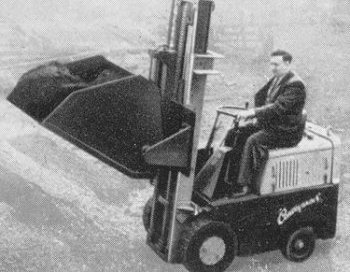
The hydraulic shovel attachment. |
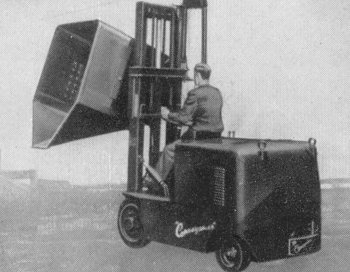
The rotating head attachment. |
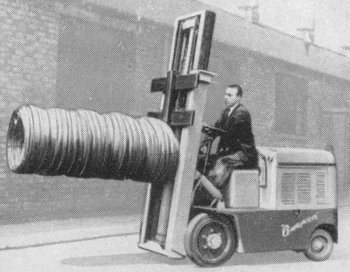
The boom attachment. |
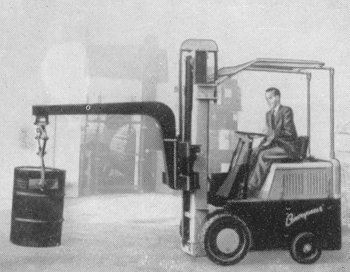
The crane attachment. |
|
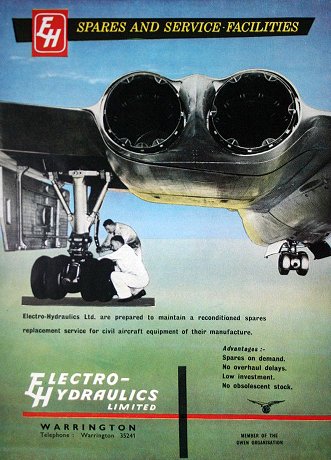
An advert from 1958. |
In 1973 Rubery Owen acquired a
controlling interest in Conveyancer Fork Trucks, and in
January 1974 Rubery Owen Conveyancer Limited was formed.
The
new company, which had manufacturing facilities at
Darlaston, Kirkby Prees, Warrington, Wednesbury, Wrexham,
and at Langham Engineering (Liverpool) Limited, manufactured
the Conveyancer range of fork trucks, and also the Rubery Owen
Travelift, Karricon and Karrilift machines.
|
|
The companies in the Conveyancer Group
were: Conveyancer Limited; Langham Engineering (Liverpool)
Limited; Conveyancer Scott-Electric Vehicles Limited;
Conveyancer Fork Trucks Limited; Conveyancer Fork Trucks
(Nigeria) Limited; Conveyancer Pty Limited (Australia);
Paul-Walden Pty Limited (Australia); P & W Industries (Pty)
Limited (South Africa); Conveyancer Plant Hire Limited; and
Conveyancer - Raymond Limited.
By March 1977 the Darlaston factory was
suffering from cash flow problems, and so in order to raise
capital, Rubery Owen Holdings Limited decided to sell the
business. As a result, all of the subsidiaries were taken
over by the parent company, and in 1980 Rubery Owen Conveyancer Limited closed.
|
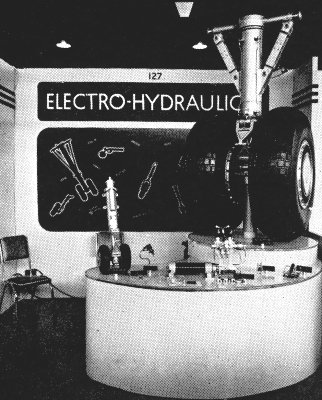
The company's display at Farborough in
1949. From the spring 1949 edition of the staff magazine
"Goodwill". |

The Handley-Page 'Hermes' luxury
airliner. They were fitted with undercarriages and
hydraulic systems built and supplied by
Electro-Hydraulics. |
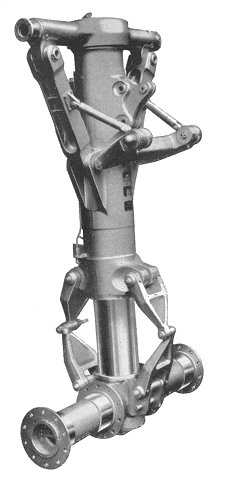 |
On the left is the main
undercarriage used in the The Handley-Page 'Hermes', and
the Avro 'Ashton' aircraft.
On the right is the nose
undercarriage unit with power steering that was used in
the The Handley-Page 'Hermes'.
The were both designed and
built by Electro-Hydraulics Limited. |
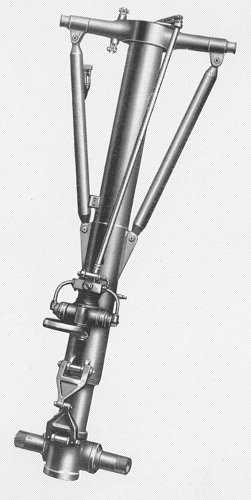 |
|
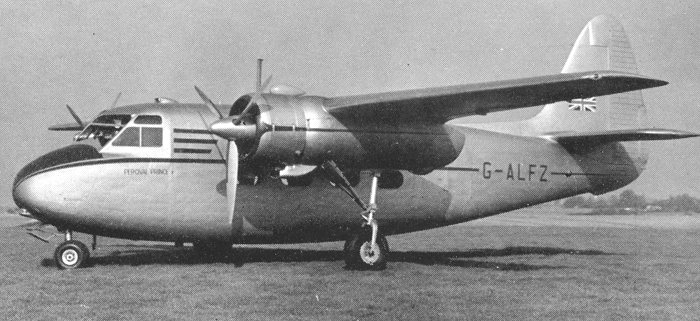
The Percival 'Prince'. |
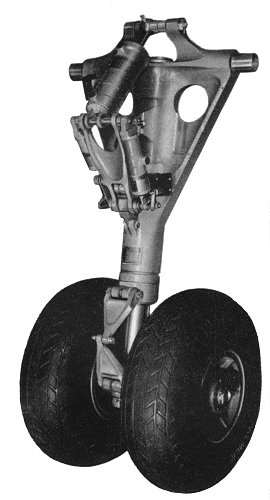 |
The Electro-Hydraulics nose
undercarriage unit that is used in the Percival
'Prince', and the 'Sea Prince'.
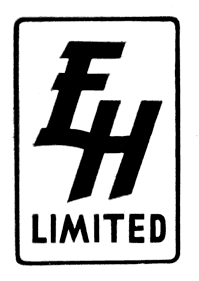 |
|
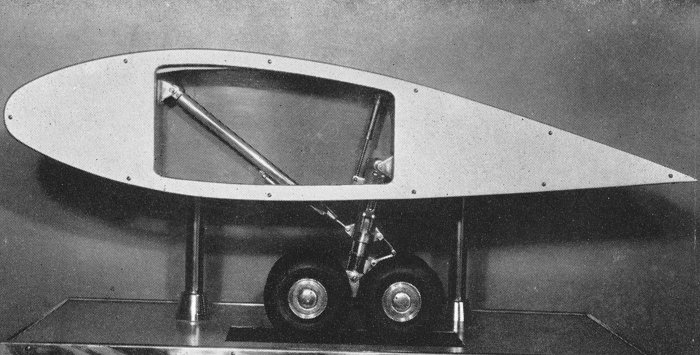
A demonstration model of a
multi-wheel undercarriage. |
|

Some of the aircraft components
made by Electro-Hydraulics Limited. |
|

More of the aircraft
components made by Electro-Hydraulics Limited. |
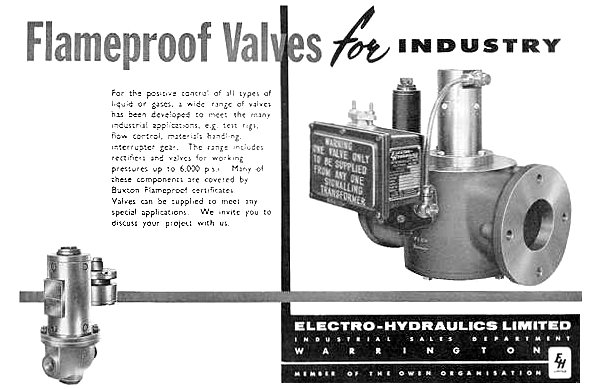
An advert from 1959.
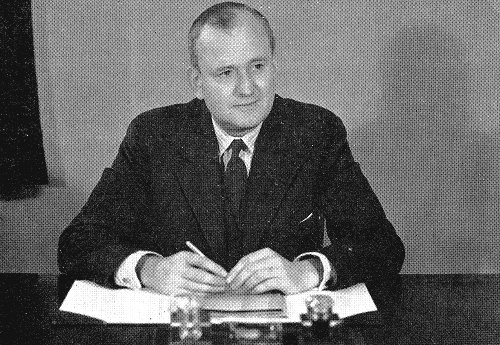 |
Mr. C. W. Sharp. Managing Director
of Electro-Hydraulics Limited.
From the spring 1949 edition of the
staff magazine "Goodwill". |
| The apprentices' training school.
From the spring 1949 edition of the
staff magazine "Goodwill". |
 |
 |
Return to
the
previous page |
|